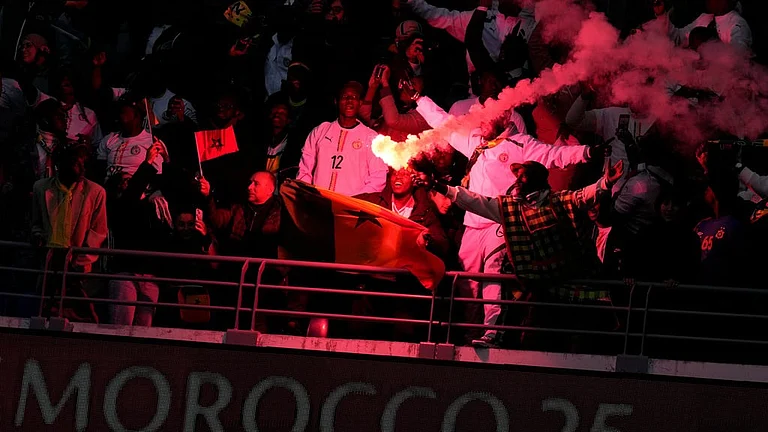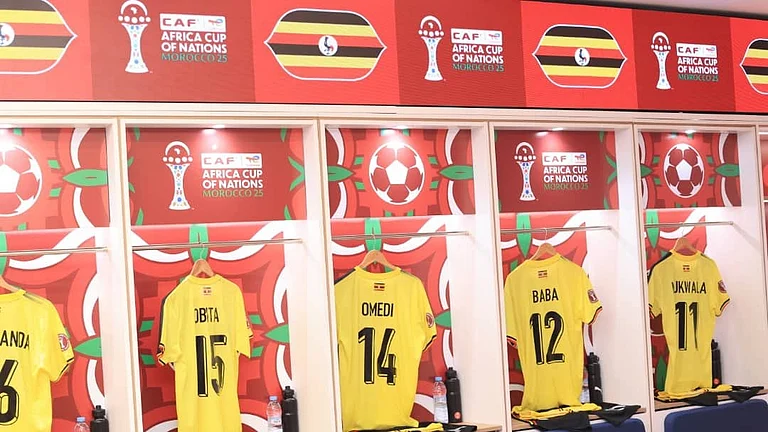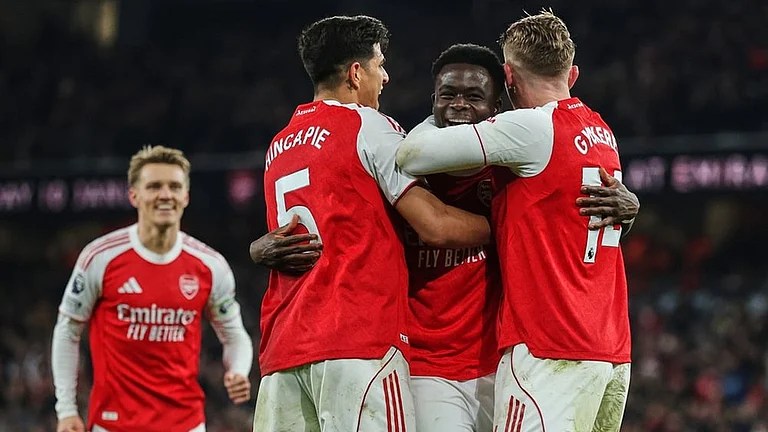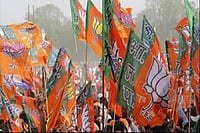WHILE power and telecom are staging act one of privatisa-tion, the roads sector does not even have its script ready. Raring to fast-track into thenext century, India, in all its 32.87 lakh sq km of area, will not be able to boast of a single expressway for at least the next six to seven years.
The cash-strapped government that opted for privatisation of roads four years ago is today hamstrung by a hazy policy. The National Highways Act, 1956, amended earlier this year to allow development and maintenance of national highways by the private sector, has turned out to be yet another false start. Potential investors continue to be dogged by unanswered questions and find themselves in Catch-22 situations. However, the Ministry of Surface Transport owes immediate explanationsnot to the investors, but to the Finance Ministry which has at this stage decided that it doesn't entirely approve of the policy.
Quite a speedbreaker this, for the already slow but much-hyped pro-gramme for super national highways (SNH) to be operated on a build, operate and transfer (BOT) basis by private investors. Under the BOT, the private operator constructs the road, collects toll-tax for a specified period of time, makes his profit, and transfers ownership to the Government. Scheduled for 33 select sectors, linking metros and manufacturing hubs with ports, the programme hasn't even had feasibility studies flagged off yet. Mid-November was to see the private players awarded sectors for conducting these studies—at no cost to the Government which is only going to supervise the project—but the wait continues.
And the Government can hardly afford to chase away investment. The requirement for the next 20 years—to be met by the BOT pro-gramme—has been estimated to be 13,000 km of SNHs, equivalent to western high-speed freeways. "The average cost of construction of each kilometre is about Rs 8 crore, including the land acquisition cost estimated to be Rs 1.5 crore perkm," says Yogendra Narain, chairman, National Highways Authority of India (NHAI). "The total investment required for building these highways, coupled with maintenance of the existing national highways, is about Rs 150,000 crore, over the next 20 years. This translates into about Rs 7,500 crore per year and the money allocated by the Government for national highways is about one-tenth of this (Rs 700 crore for 1995-96). It is not enough even for maintenance," he adds.
For the feasibility studies alone, the average cost per km is estimated to be from Rs 2 lakh to Rs 2.5 lakh. (The average length of a sector: 200-500 km.) The contracts for construction of roads will be signed much later, after new rounds of competitive bidding, and only for sectors declared viable by the studies. The contract for a sector may not be awarded to thecompany which conducts the study there. In which case, it will be offered 30 per cent of the length of the route to construct. The catch lies in having to accept it at the fee and terms of the winner. If it's not suitable, the cost of the study will be reimbursed to it by the awardee. The Finance Ministry approves of neither this arrangement, nor the provision under which those conducting the studies will be exempt from bidding for pre-qualifying tenders.
The investors are unhappier. For starters, there is no policy document. Its poor substitute is a brochure which overlooks some basic questions. One of the major stumbling blocks is the deadlock in the land acquisition issue. Who—the Government or the investors—is going to acquire the land for construction of the highways? "We are committed to providing the land to the companies, but those who wish to acquireit on their own are free to do so," clarifies Narain. The private players would prefer to leave the task to the Government, but also know that it would mean watching from the fences for at least five years. And though committed, the Government does not have enough in its kitty to keep the promise. The NHAI is proposing a Highway Revolving Fund, to be fed by a cess of 50 paise per litre of diesel and petrol. The idea is borrowed from the US which has a similar fund under the Federal Aid Highway Program. "We expect about Rs 4,000 crore per annum from the cess, which over 20 years will be sufficient for acquiring land," says Narain. However, well into a cushy pre-election year, people are unlikely to be burdened with a petrol price hike.
The option of volunteering for land acquisition could also be suicidal for private players. "The Madras-Bhubaneswar stretch, for instance, is 1,300 km long and winds through three states. Even if one manages to raise the funds, it would be extremely difficult to actually physically acquire the land," asserts Harindran Nair, executive director, Feedback Ventures+ Collaborations, a Delhi-based project management firm. More problems may crop up later. Farmers may turn back and complain about compensation being inadequate.
In the face of no counter-guarantees from the Government, the investors are worried about their profitability. The maximum licensed period for the private players is 30 years. "The policy is not clear. How exactly can we recover the money in this time?" questions Ashok Jerath, general manager (construction), Ansal Properties and Industries. If the only source of revenue is going to be the toll from the users, would the traffic density allow sufficient returns, especially if goods traffic carrying agricultural produce, and government vehicles are to be exempted? NHAI dispels this. "No one is to be exempted. These freeways will be optional routes. Those who don't want to pay can use the old/regular routes," says Narain. "Also, only mechanised vehicles will be allowed through these."
While nothing is fixed about the toll rates, details are expected to emerge after the studies. The problem initially may not be just of having enough users, but to get them to accept the idea of paying the toll. While for bridges and by-passes the tax may fall in the range of Rs 2 to Rs 30, it will be much higher for freeways. "The Delhi-Chandigarh route, for instance, may command a toll of Rs 300 to Rs 400," guesses Dr Som Datt, chairman of Som Datt Builders, one of the bidders for conducting feasibility studies.
The physical mechanics of collecting the toll are not clear. Availability of data is another hurdle. It is critical for the investor to have traffic and other relevant data. "Studies conducted in any particular sector, say, over the last 20 years, would be available only with the Government and it's almost impossible to get them," says a potential investor. "And even if one manages to get this data, it is not completely reliable." Wiser investors intend to collate data themselves.
They also complain that NHAI has too many roles. "Its role should be only regulatory—to make regulations under the guidelines of the policy and make sure they are adhered to," says Nair. "Also, the Government has embarked on a fairly big programme all at once. It would have been better to have smaller projects in the initial phase." An autonomous body, the NHAI seems to have too much to worry about: fine tuning the policy, identifying roads for privatisa-tion, getting feasibility studies conducted, acquiring land, and entering into contracts with private investors for construction.
Conversely, the Government is not averse to allowing real estate development along the roads. It has also announced a five-year taxholiday for the investors, besides declaring the road sector an industry to facilitate borrowing and allowing floating of bonds.
With roads getting choked, incentives are clearly in order. And though the response at the Centre is sluggish, some state governments have set the ball rolling for themselves by awarding sectors to private investors. The only operating BOT project in India so far—Rau-Pithampur, a small 13-km stretch in Madhya Pradesh—came into operation in 1993 and is running on tolls. States such as Maharashtra and Karnataka have also teed-off projects on the Bombay-Pune (a route which is part of the Centre's SNH network) and Mysore-Bangalore stretches. The Rajasthan government, among other projects, has tied up with HUDCO in a 30-70 equity partnership for making a bridge and a tunnel.
The Ministry of Surface Transport projects everything is hunky-dory at the Centre too, what with 22 bidders—who include nine foreign players in partnership or otherwise—"enthusiastic" about conducting feasibility studies. "Except the Srinagar-Jammu route, offers have been received for all the sectors for the studies," says Narain. But sources say even the World Bank, which may co-finance BOT projects, is disappointed with the progress of the roads sector. It has already given soft loans to the Government for construction of small stretches of expressways (not under BOT) in the country. Though the Government's decision to go in for a BOT programme has been applauded, its smooth implementation is obviously not up its alley.


























